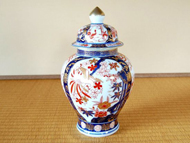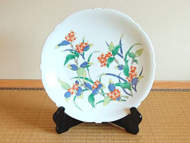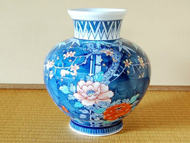Shopping Cart
-
Your cart is empty.
Categories
Shop Manager Profile
| Heartfelt friendship between Arita and Europe through ceramic arts | |||||||||||||||
| During feudal times (the 17th through the 19th centuries), Japan, surrounded by the sea, practiced selfisolationism by excluding all foreigners from her shores. Only one small window was open. It was Nagasaki, where a small settlement called Dejima was provided for a few Dutch and Chinese who were engaged in licensed trade. It was too minor both in quantity and in quality to influence Japanese life style and culture. It can be said that Japan was an orphan, isolated from international cultural intercourse for 300 years. The history of Arita The history of Arita, where the world-famous “Ko-Imari” was produced, began with the introduction of the techniques from Korea. In the end of the 16th century, Hideyoshi Toyotomi, the political ruler of Japan at that time, invaded Korea. When his armed forces withdrew from Korea, some of the feudal lords who participated in the campaign under Hideyoshi brought a number of Korean potters back to Japan. Among these potters was Ri Sampei (Korean Name Lee Cham-Pyung). He discovered Kaolin in Arita and produced fine white porcelain for the first time in Japan. Soon the potters settled down in Arita and became naturalized citizens of Japan. They created fine white porcelain with a unique Japanese beauty, different from the Korean originals. During its refining process, Arita porcelain was influenced by the products of Keitokuching, the Chinese national kiln at that time, and also by the Indian and Persian patterns which seem to have been introduced to Japan through the Silk Road.
That was a hundred years ago. Today, Kakiemon, Imaemon and other young Arita potters are proud of their 400-years-old tradition and the techniques they have retained. And still they are striving to produce even more modern articles day by day. | |||||||||||||||
| Arita porcelain is roughly classified into three groups by style. | |||||||||||||||
| The first is called the “Ko-Imari” group. | |||||||||||||||
| |||||||||||||||
| To the future... | |||||||||||||||
| As we learned from Mr.Gottfried Wagner 300 years ago, we, people in Arita, want to learn from you now. Arita porcelain has 400 years history of proud tradition. Its beauty cannot be separated from the natural landscape of this small village surrounded by mountains. The sky, the trees rustling in the wind and a sense of local pride contribute to the charm of Arita porcelain. But the people in Arita are not satisfied with existing conditions. We are expecting much from the furure. We are standing firm in this town, pursuing something new and even more beautiful, as we have done for 400 years. We are proud of our porcelain and would like to hear your opinion of it. We sincerely want to learn from you. We leave our good faith for the people of the world in these pieces of porcelain produced in Arita. | |||||||||||||||


